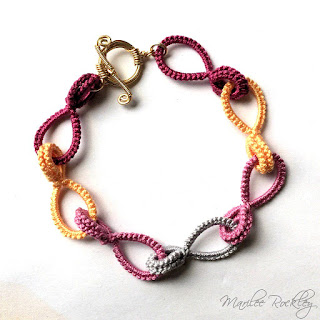

As a final note, Kivel recommends keeping an uncluttered and calm atmosphere. Additionally, a mat or soft surface should be used to protect your metal watch from scratching your tabletop. “If a piece falls out and you’re not expecting it, they’ll easily roll and end up on the floor.” Just to be extra cautious, Kivel also recommends keeping something at the edge of the table to stop any rogue pins or ferrules from falling off.

“You want to work on a flat surface,” says Kivel. If this is the case, make sure you’re removing enough links from each side so that the clasp is dead center.


But, as Kivel notes, on some low-end and used watches, one side of the bracelet may be longer than the other. Ideally, it should be centered on the bracelet, and you should be taking out an equal amount of links on both sides of the clasp to keep it that way. Also keep in mind the placement of the clasp. Position it to where you’d like to wear it on your wrist, then gather up the slack and count out how many excess links there are. Try on your watch with all the links in on the bracelet. Nothing in this process will be more frustrating than going through all this trouble only to find you’ve removed too many links.
Watch bracelet cotter pins how to#
“Some are easy, and some can be very difficult, to the point where someone comes into our place, it takes 20 minutes because we have to replace something or change something that got bent while trying to change it.” Kivel recommends taking the watch to a shop if you want it done perfectly but, for those planning on doing it at home, he shared some tricks and tips on how to remove watch links the right way. “I’ve seen some horror stories of people trying to do it on their own,” said Steve Kivel of New York’s Central Watch repair shop. If you put it all back together improperly, your watch could fall off your wrist. A slip of the wrist could scratch or dent the bracelet. But it’s still a frustrating task that requires finesse and calm. The pins and ferrules can be removed, either with affordable tools found online, or with whatever you’ve got in your junk drawer. That pin is, in some watches, paired with two small metal tubes called “ferrules” that hold it in place at both ends of the link. You have two courses of action: you can take it to a jeweler or repair shop and spend something to the tune of $20 to get it professionally sized, or you can take matters into your own hands.įortunately, most watch bracelets come with a pretty simple “cotter pin” system made up of a metal pin within a hole, which holds the links together. And unless you have Hulk-sized wrist, what you find is that the bracelet is a few links too big. You take it out out of the box, remove the stickers and try it on. It does not store any personal data.That watch you ordered - that cool, all-steel number - has finally arrived, after days of waiting. The cookie is set by the GDPR Cookie Consent plugin and is used to store whether or not user has consented to the use of cookies. The cookie is used to store the user consent for the cookies in the category "Performance". This cookie is set by GDPR Cookie Consent plugin. The cookie is used to store the user consent for the cookies in the category "Other. The cookies is used to store the user consent for the cookies in the category "Necessary". The cookie is set by GDPR cookie consent to record the user consent for the cookies in the category "Functional". The cookie is used to store the user consent for the cookies in the category "Analytics". These cookies ensure basic functionalities and security features of the website, anonymously. Necessary cookies are absolutely essential for the website to function properly.


 0 kommentar(er)
0 kommentar(er)
